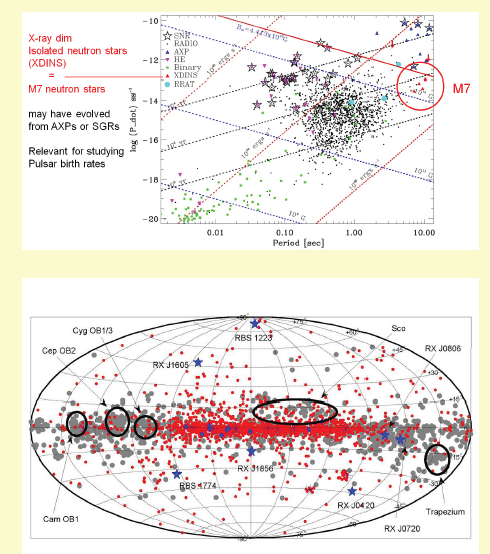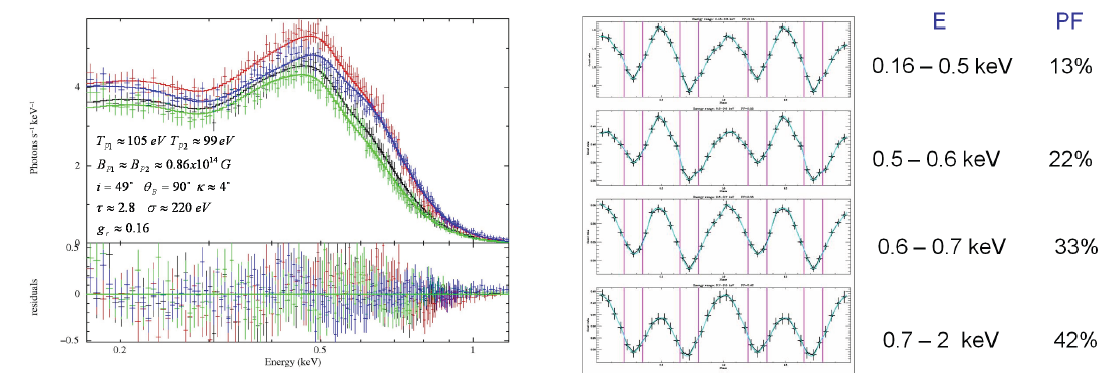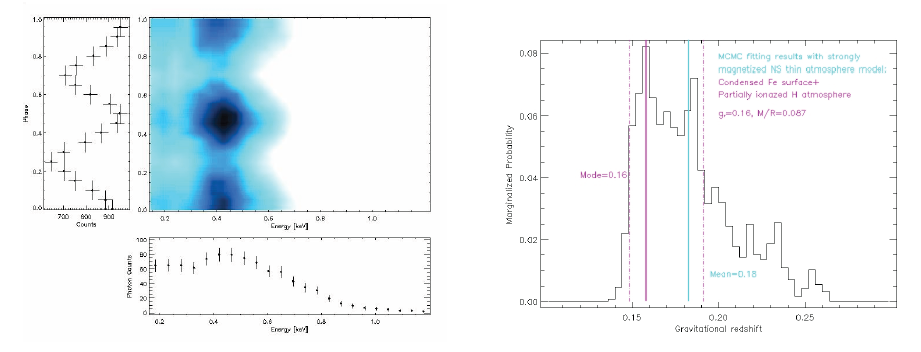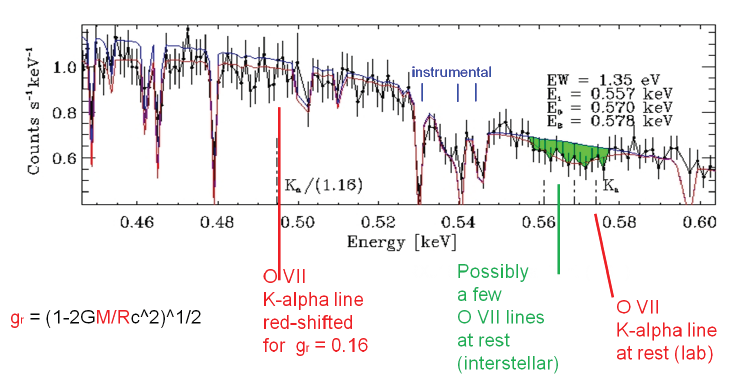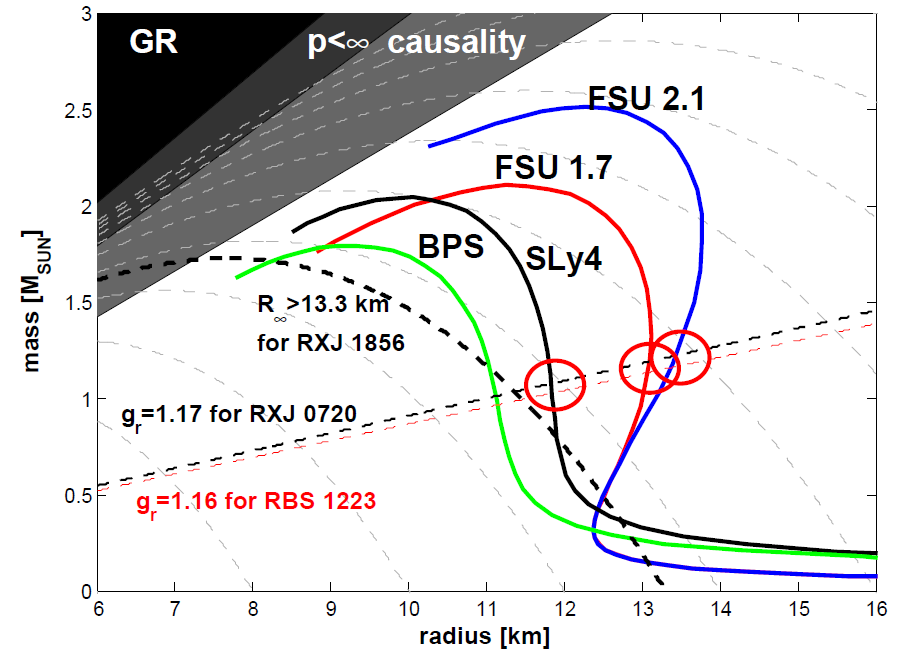Project C7
"Populations of Astrophysical Sources"
Isolated neutron stars are potential sources for constraining the equation-of-state of matter at ultra-high densities. The determination of the mass can be achieved by measuring the surface gravity or gravitational redshift from absorption lines. Here, strong magnetic fields and polarization effects become important, so that we will investigate radiation transfer through the geometrically thin neutron star atmosphere. The goal is to construct a new generation of non-LTE model atmospheres for neutron stars.
In project C7 we study the radiation transfer through the geometrically thin neutron star atmosphere. The goal is to apply our new generation of model atmospheres to all well-observed neutron stars, both spectra and timing data from XMM-Newton and Chandra observatories. We will compare our new models for rotational phase-resolved spectroscopy to the X-ray spectroscopic data of all seven isolated neutron stars (the so-called "Magnificent Seven") by a Markov-Chain Monte-Carlo simulation. Among the free parameters is the gravitational redshift or compactness (mass/radius) of the neutron star, i.e. a constraint of the
Equation of State. We will also continue to identify spectral features in high-resolution neutron star X-ray spectra for direct determination of gravitational redshift or compactness.
- The study of thermal emission from isolated neutron stars may allow one to infer the surface e ffective temperature and total bolometric flux.
- The detection and identification of any absorption/emission feature in the spectrum or performing rotational phase-resolved spectroscopy of isolated NSs will allow us to determine the gravitational redshift and directly estimate the mass-to-radius ratio. Together they yield a unique solution for M and R. These spectral features may allow to measure the NS magnetic field and provide an important input for modeling magnetized atmospheres.
Thermally emitting Isolated Neutron Stars
A small group of very intriguing objects - sometimes called "X-ray Dim Isolated Neutron Stars", seven in total ("Magnificent Seven", M7) - were discovered with ROSAT, important input on their X-ray emission properties revealed observations with Chandra and XMM-Newton.
Phase resolved spectroscopy of RBS1223 (1RXS J130848.6+212708)
RBS 1223 among M7 NSs shows highest pulsed fraction and strongest broad absorption feature. High quality rotation phase resolved spectroscopy is needed in order to fit with NS magnetized atmosphere models and to constrain the gravitational redshift of NS.
XMM-Newton EPIC pn co-added, phase resolved spectra, light curves and MCMC fitting with strongly magnetized NS condensed Iron surface+partially ionized Hydrogen thin atmosphere model.
High resolution X-ray spectroscopy of RXJ0720.4-3125
We detected a narrow absorption feature at 0.57 keV in the co-added RGS spectrum that may have partly originated in the NS atmosphere/ISM Circumstellar environment.
XMM-Newton combined high resolution spectrum of RXJ0720.4-3125, absorption line may constrain the compactness of the NS
Mass-radius relation from phase resolved spectroscopy
M/R diagram with stable configurations of mass and radius of some EoS (references below). The upper left regions are excluded by rs (GR), central pressure less than infinity and (p<∞) and that the speed of sound in the object does not exceed the speed of light in vacuum (causality). Our measurements yield a lower limit for R∞ >13.3 km for RXJ1856 (black dashed line from parallax measurements) and from (possible) red-shifted OVIII lines in the co-added RGS and Chandra spectra of RXJ0720 (see figure above) gr=1.17 (black dashed line). For RBS 1223 M/R = 0.087 (Hambaryan et al. 2011, A&A 534), hence gr=1.16 (red dashed line). These values are consistent with EoSs in the M/R diagram that are indicated by red circles. Hence, we can exclude the BPS EoS and all EoSs dealing with strange matter (see also Lattimer 2010).
FSU & NL
G. Shen, C. J. Horowitz, S. Teige, Phys. Rev. C 82, 045802 (2010)
G. Shen, C. J. Horowitz, S. Teige, Phys. Rev. C 82, 015806 (2010)
G. Shen, C. J. Horowitz, S. Teige Phys. Rev. C 83, 035802 (2010)
SLy EoS from Hänsel & Potekhin, 2004 A&A
Our goals are:
- Phase-resolved spectroscopy of all thermally emitting isolated neutron stars
- XMM-Newton RGS and Chandra LETG high resolution co-added spectra of INSs
- Fitting with new generation of magnetized model atmospheres (condensed surface+thin partially ionozed hydrogen atmosphere)

